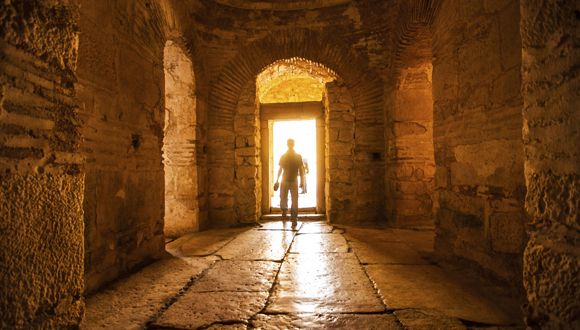While the land of Israel holds many secrets from the ancient era, the city of Jerusalem is called "Holy Land" as it is sacred to many religious traditions, which includes the Abrahamic religions Judaism, Christianity, and Islam. Some of the most sacred places for each of these religions have found in this city.
There was a Moẓa Expedition Project which was led by Tel Aviv University (TAU) and Israel Antiquities Authority (IAA) researchers. Shua Kisilevitz and Professor Oded Lipschits of TAU's Sonia and Marco Nadler Institute of Archaeology, principal investigators in the excavation and lead authors of the study along with IAA have found traces of two temples about four miles from Jerusalem, in the ancient city of Motza. The researchers stated that Motza was an Iron Age administrative centre.
The temples near Jerusalem
It should be noted that the first temple on the site has been tentatively dated to the tenth century BC. On the other hand, the monumental temple complex, which was built on top the first one, has been dated to the late tenth century to early ninth century BC.
As per the researcher, Kisilevitz, the temple complex at Motza conformed to religious conventions in the Kingdom of Judah at the time of Iron Age which was the nation formed from the territories of the tribes of Judah, Simon and Benjamin after the United Kingdom of Israel was divided. But as per the biblical texts, King Hezekiah and King Josiah restricted worship to the structure known as Jerusalem's First Temple.
The existence of Motza's temple complex suggests that other temples continued to operate outside of the city of Jerusalem, said Kisilevitz. She also mentioned that it can be believed that the local leaders of Motza may have built the temple complex to increase their control over the region and to boost the success of the growing grain distribution business.
During the excavation, archaeologists found cultic artefacts including human-shaped and horse figurines, a cult stand decorated with lions or sphinxes as well as a stone altar, a stone offering table and a pit filled with ash and bones have been uncovered from the holy land of Jerusalem.

Here are the top five amazing archaeological discoveries in Israel
- The watchtower: Archaeologists discovered 2700-year-old watchtower dating back to 8th century BC in Southern Israel. As per the experts it was built during the time of King Hezekiah. This watchtower used to serve as an observation point warning against attacks from enemies in the region.
- Neanderthal settlement: In the land of Israel, excavators unearthed a 50,000-year-old, Neanderthal settlement in Ein Qashish. From this palaeolithic era settlement, researchers found bones and artefacts which suggested that the ancient inhabitants of the area lived at the site for about 10,000 years.
- Pilgrimage road: Researchers discovered a 2000-year-old pilgrimage road in the city of David, Jerusalem which belong to the Herodian era. Archaeologists who conducted studied at the site revealed that the road was used by Jewish pilgrims travelling to the Jewish temple, which is Judaism's holiest site during the second Temple period, 516 BC to 70 CE.
- Neolithic Town: Researchers found a Neolithic town, located five-kilometre west of Jerusalem. As per the experts, the town is 9000-year-old. It is claimed that around 3,000 people used to be the residents of this town which includes replete streets, homes and burial grounds.
- The Canaanite palace staircase: An excavation by Hebrew University unveiled a massive staircase made of basalt plates 4.5 meters wide at Tel Hazor in Northern Israel. The archaeology stated that this staircase is around 3500-year-old. The site, where the staircase was found is now a known as a UNESCO World Heritage site.









